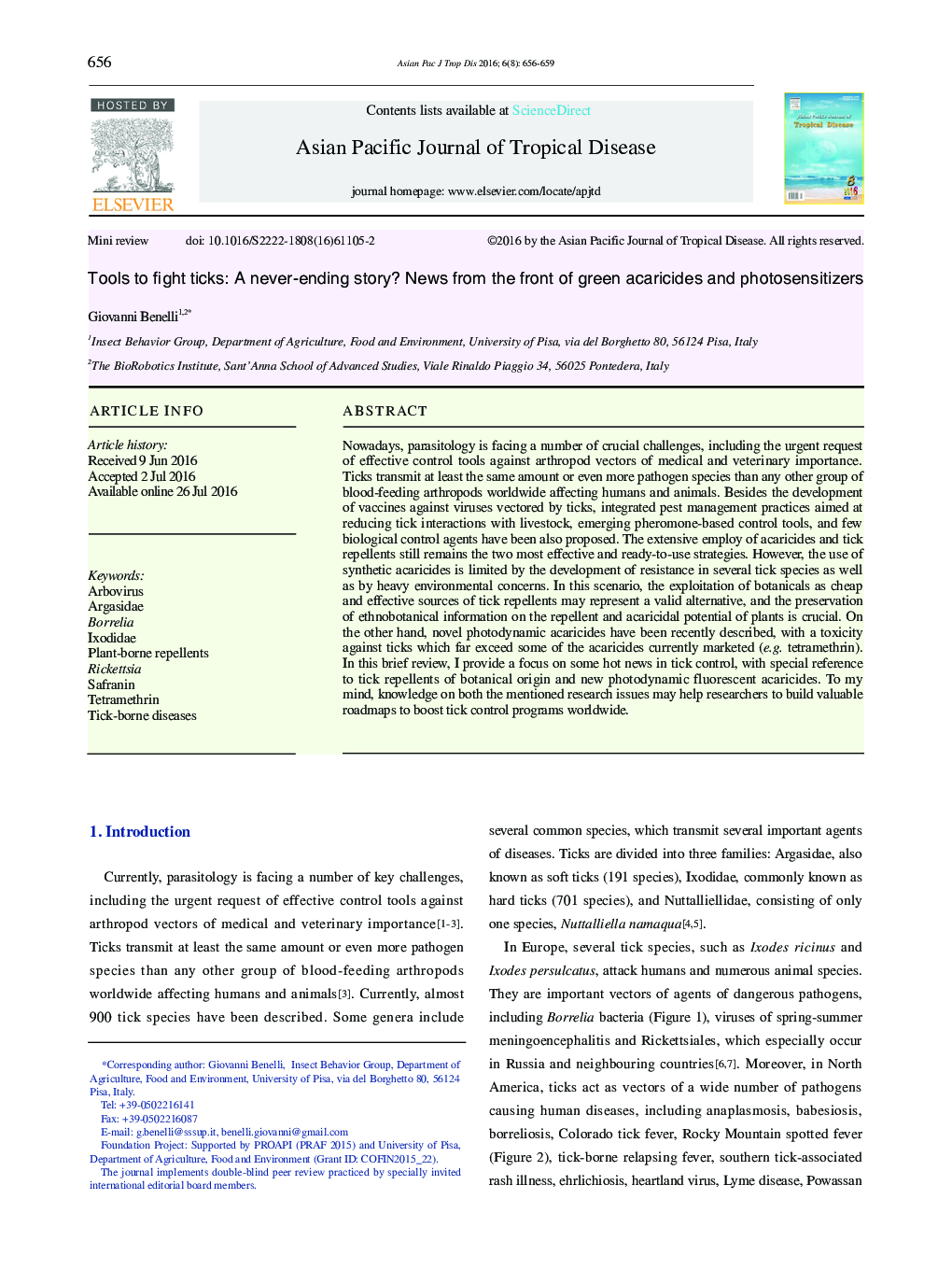| Article ID | Journal | Published Year | Pages | File Type |
|---|---|---|---|---|
| 3453817 | Asian Pacific Journal of Tropical Disease | 2016 | 4 Pages |
Nowadays, parasitology is facing a number of crucial challenges, including the urgent request of effective control tools against arthropod vectors of medical and veterinary importance. Ticks transmit at least the same amount or even more pathogen species than any other group of blood-feeding arthropods worldwide affecting humans and animals. Besides the development of vaccines against viruses vectored by ticks, integrated pest management practices aimed at reducing tick interactions with livestock, emerging pheromone-based control tools, and few biological control agents have been also proposed. The extensive employ of acaricides and tick repellents still remains the two most effective and ready-to-use strategies. However, the use of synthetic acaricides is limited by the development of resistance in several tick species as well as by heavy environmental concerns. In this scenario, the exploitation of botanicals as cheap and effective sources of tick repellents may represent a valid alternative, and the preservation of ethnobotanical information on the repellent and acaricidal potential of plants is crucial. On the other hand, novel photodynamic acaricides have been recently described, with a toxicity against ticks which far exceed some of the acaricides currently marketed (e.g. tetramethrin). In this brief review, I provide a focus on some hot news in tick control, with special reference to tick repellents of botanical origin and new photodynamic fluorescent acaricides. To my mind, knowledge on both the mentioned research issues may help researchers to build valuable roadmaps to boost tick control programs worldwide.
